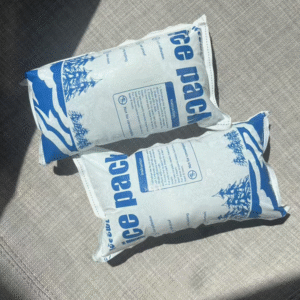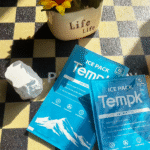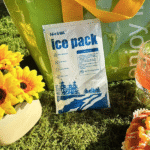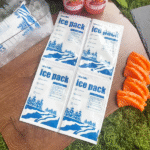Packs de glace sec: Où acheter 2025 (Guide pratique)
Si vous demandez dry ice packs where to buy dans 2025, the best answer depends on whether you need real dry ice (co₂ solide) or reusable PCM/gel packs. This guide compares local pickup, online choices, and bulk suppliers, then shows how to size coolant, marque UN1845, and avoid costly mistakes while protecting product temperature. You’ll get fast decision tools and compliant pack-out steps you can use today.
-
Find sources fast: locale, online, et bulk dry ice packs with pros and cons.
-
Choose the right coolant: real dry ice vs PCM “dry‑ice‑level” packs for frozen shipping.
-
Ship by the book: 2025 UN1845 étiquettes, Classe 9 pour l'air, and USPS/FAA limits.
-
Right‑size costs: simple 5–10 lb/24 h règle, plus insulation upgrades that save mass.
-
Act with confidence: a 60‑second chooser and a step‑by‑step pack-out workflow.
Where to buy dry ice packs near you in 2025?
Réponse courte:
Buy real dry ice from industrial gas distributors and grocery chains that stock it; buy “dry‑ice‑level” packs (PCMS) from packaging vendors when hazmat steps aren’t practical. Fournisseurs de gaz industriels offer pellets/blocks and consistent quality; grocery kiosks are ideal for small, same‑day needs; packaging suppliers bundle insulated shippers with gel/PCM packs for non‑hazmat routes.
Ce que cela signifie pour vous:
Prendre local pickup for urgency and freshness, or schedule distributor delivery for recurring volumes. Utiliser packaging vendors when you need shippers, étiquettes, and coolant in one order. Pour les options réutilisables, considérer −21 ° C PCM for many frozen lanes and 0 Venir ° C pour 2 à 8 ° C.
Local vs. livraison: when does each win?
| Source type | Options typiques | Lead time | Ce que cela signifie pour vous |
|---|---|---|---|
| Industrial gas distributor | Boulettes, pépites, blocs | Same day–48 h | Consistent quality; trained staff; best for volume. |
| Grocery retail | Pre‑cut blocks (varie) | Same day if in stock | Fastest for small runs; call ahead. |
| Packaging supplier | Expéditeurs isolés, gel / pcm | 1–3 jours + | Non‑hazmat routes or mixed coolant kits. |
Practical buying tips
-
Reserve before heat waves/holidays. CO₂ supply can tighten; add time buffers.
-
Confirm what you’re buying. Many “dry ice packs” online are PCM ou gel, pas de co₂; check rated temperature (Par exemple, −21 °C vs −78.5 °C).
-
Bundle supplies. Commande UN1845/“Dry Ice” marques, Classe 9 étiquettes (pour l'air), doublures, and shippers together to avoid last‑minute scrambles.
Vraie cas: A bakery used grocery kiosks for weekend runs and a distributor mid‑week for pellets. Avec un 20% tampon d'été and one standard foam shipper, spoilage claims dropped near zero.
Dry ice packs where to buy online vs. in‑store—what’s smarter?
Fin de compte:
Intlore pickup wins for urgent, petites quantités. Online/specialized vendors win for planning, variety, and bundled kits. If you see “dry ice packs” online, they’re often reusable PCMs or gel, pas co₂; that’s great for non‑hazmat lanes but won’t reach −78,5 ° C.
Spot real dry ice vs. “dry ice” packs (réutilisables)
| Type de liquide de refroidissement | Typical phase point | Patrie (air) | Meilleure utilisation | Signification pour vous |
|---|---|---|---|---|
| Vraie glace sèche (Co₂) | ~ −78,5 ° C | Oui | Profond, longues voies | Highest cold power; étiquette & limit apply. |
| Pack PCM (“−21 °C”) | ≈−15 to −21 °C | Généralement Non | Frozen foods without hazmat | Easier ops; validate duration. |
| Pack de gel (0 ° C) | ≈0°C | Non | 2–8°C réfrigéré | Simple, bon marché; not for rock‑solid frozen. |
Dry ice packs where to buy for bulk and B2B orders?
Go direct à industrial gas distributors for recurring dry ice orders and spec sheets. Associer contract packaging suppliers for palletized shippers, doublures, et étiquettes. For cross‑border programs, utiliser regional suppliers to reduce transit time and freight.
En gros & international tips
-
Estimate weekly usage (Par exemple, 50 boxes × 5 lb = 250 lb/week). Order a buffer for summer lanes.
-
Plan storage & manutention. Glace sèche sublimate; use vented, insulated storage. Train on PPE and safe handling.
-
Check air shipment limits and markings if your bulk order moves by air.
-
Leverage supplier expertise for pack‑out design and validation.
How much should you buy—and how do you pack safely?
Règle rapide: Plan ~5 à 10 livres (2.3–4,5 kg) de glace sèche par 24 h for a small, expéditeur bien isolé. Increase mass for thin foam, voies chaudes, or multi‑stop networks. Lieu product low et glace sèche sur le dessus, remplir les vides, and vent the shipper.
Back‑of‑envelope:
Glace sèche (kg) ≈ (hold hours / 24) × 2.5–4.5 kg/day → validate with a pilot (weigh pre/post to measure sublimation).
How to pack a compliant dry‑ice shipper (étape par étape)
-
Préchauffeur product and shipper.
-
Ajouter doublure + absorbant; assurer ventilation for CO₂ gas.
-
Load product low, Placer la glace sèche au-dessus de il.
-
Remplir les vides to reduce warm air gaps.
-
Mark the box: “Dry Ice”/«Dioxyde de carbone, solide", UN1845, poids net (kg); ajouter Classe 9 pour l'air.
-
Choisir service level: sol (simpler) vs air (patrie).
60‑second coolant selector (self‑check)
-
Target temp at delivery?
-
Rock‑solid frozen → Glace sèche
-
Frozen but tolerant of edges → −21 ° C PCM
-
Chilled 2–8 °C → 0 Venir ° C
-
-
Lane time & isolation?
-
≤24h + thick foam → 5–10 lb dry ice or adequate PCM
-
48+ h or thin foam → increase mass or upgrade shipper
-
-
Transporteur & segment?
-
Air + limited hazmat capability → PCM
-
1–2 day ground → Dry ice or PCM, based on product tolerance
-
Résultat sur le terrain: A seafood DTC brand swapped dry ice for −15 °C PCM on 1‑day lanes, removing hazmat steps and reducing failed deliveries while holding <−10 °C to POD.
Dry ice packs where to buy if you’re flying or mailing?
-
Passenger air travel: 2.5 kg (5.5 kg) limit per passenger/package with airline approval; the package must vent and be marked “Dry Ice/Carbon Dioxide, solid” with quantity.
-
Fret aérien: Suivre IATA DGR PI954; marque UN1845, Nom d'expédition approprié, Kg net, et appliquer un Classe 9 label on the same surface when space allows; carriers publish 2025 listes de contrôle.
-
USPS (air domestique): Allowed with vented packaging and markings; jusqu'à 5 lb par envoi postal; international USPS is highly restricted.
These specifics reflect 2025 guidance summarized in our internal research.
2025 développements & trends in dry ice and “dry ice pack” buying
Quoi de neuf (Août 2025):
Carriers refreshed dry‑ice labeling checklists, reinforcing UN1845/kg marking and overpack notes under the 66th IATA DGR. CO₂ supply can tighten regionally, so reservations and dual‑sourcing matter. Adoption du PCM keeps rising as shippers seek simpler, reusable coolant for short/medium lanes.
Dernier progrès en un coup d'œil
-
Rules clarity: Updated checklists reduce labeling errors and holds.
-
Reusable shift: −21 °C PCM bricks replace some dry‑ice lanes without hazmat steps.
-
Supplier networks: More branch locators and regional plants speed local pickup.
Perspicacité du marché: Cold‑chain growth across food and life sciences expands supply, technology options, and negotiated pricing opportunities. Validate new solutions on your lanes before scaling.
FAQ
Q1: Where can I buy small quantities—dry ice packs where to buy today?
Utiliser grocery kiosks for real dry ice or call nearby industrial gas branches for pellets/blocks; for reusables, grab Packs PCM/gel from packaging catalogs or local retail.
Q2: How much dry ice do I need for a day?
Plan ~ 5–10 lb par 24 heures for a small, expéditeur bien isolé; test and adjust for season and foam thickness.
Q3: Are “dry ice packs” online real dry ice?
Often no—most are PCM ou gel. Check the phase point (Par exemple, −21 °C or 0 °C) and duration in ton shipper size.
Q4: Ai-je besoin d'étiquettes spéciales pour expédier avec de la neige carbonique?
Oui: UN1845, nom propre, Kg net, et un Classe 9 label for air shipments; le colis doit secouer Co₂.
Q5: Is dry ice safe for food and pharma?
Yes—when vented and handled with EPP; éviter les espaces confinés. Follow exposure guidance and never seal in airtight containers.
Résumé & recommandations
Points clés: Buy real dry ice from industrial gas ou retail kiosks, and buy PCM / GEL when hazmat steps are impractical. Utiliser ~5–10 lb/24 h as a baseline, mettre ice on top, remplir les vides, et Mark UN1845 avec kg. Validate with a lane pilot before scaling.
Étapes suivantes:
-
Décider température cible et temps de transit.
-
Choisir glace carbonique / −21 ° C PCM / 0 Venir ° C.
-
Reserve local pickup or place a bulk order.
-
Print labels and follow the pack‑out steps above.
CTA: Need a lane‑fit coolant plan? Request a 15‑minute sizing review—we’ll deliver a one‑page SOP for your next shipment.
À propos du tempk
We design validated pack‑outs for glace carbonique, PCM, and hybrid solutions and source compliant materials with ready‑to‑print labeling. Across bakeries, kits de repas, et diagnostic, our programs often reduce coolant mass 15–30% after lane testing—without sacrificing hold time. Talk to us about a route‑specific buy list and SOP you can deploy this week.
























